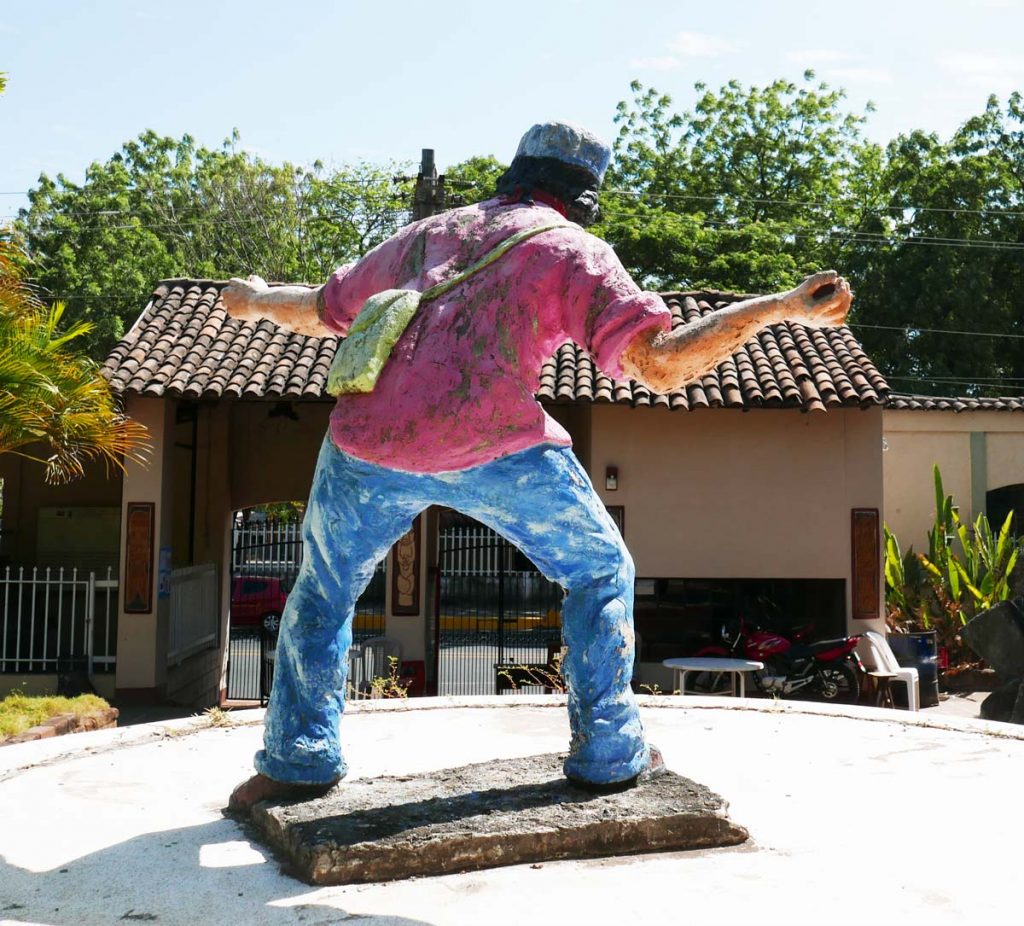Dozens of construction workers are busy in the burning sun on the municipal building of Granada and an adjacent building. ‘Probably fixing the damage of last year’s riots’, I jokingly tell my travel mate. Turns out it’s no joke at all.
Granada is, or was, the epicentre of tourism in Nicaragua. At the foot of two volcanoes (one of them active), at the edge of the impressive Ometepe lake, close to the volcano laguna of Apoyo and with a colonial-style center, it basically is a picture-perfect town for foreign visitors.
Riots
Unfortunately Granada also found itself in the epicentre of the 2018 riots. And from one day to the other, the tourists stopped coming and hotels were fighting to survive. And still. are. A massive, self-inflicted wound this time, in contrast to the eighties when imperial America played a dubious and big role.
What had happened? Well, when you travel around you basically hear two different versions. Supporters of sitting president Daniel Ortega will mention ‘some small problems’, because of reforms to the pension system. And it didn’t exactly help that these were announčed by the hugely unpopular vice-president Rosario Murillo, Ortega’s wife… But all is good now, say the supporters of their party, FSLN, that sprung from the Sandinista liberation movement.
Ortega the problem?
The other side says Ortega himself is the problem, because he is clinging onto power. They lament a lack of freedom of expression, and complain Ortega controls a large part of the votes because the public sector (hospitals, transport, fuel companies) is big in Nicaragua. That is what caused last year’s uprising, they say.
The truth is probably somewhere in between: Nicaragua did make tremendous economic progress in the last ten years under Ortega. His answer to the protests were seen by many international observers as disproportionate. And amongst the protest movement itself there were most certainly segments that just wanted to have a good fight with the police.
Consequences
But it will take quite some time before the country will recover. Not only were there between 50 and 500 deaths (yes, depending on who you ask), more than 500 protesters were imprisoned. Only recently there seems to have been progress in talks between government and protesters to release the prisoners and implement reforms to guarantee democracy.
The tourist industry took the biggest hit. Leon, apparently a buzzing town a year ago, was almost without tourists when we visited. Granada was slightly better, though many hotels have closed or are thinking about it. Gerry, the Irish owner of our guesthouse and a Sandinista, slashed his prices by half. ‘We had an occupancy rate of 98% and thought 2019 would become our big year, but now we are struggling for survival.’
Awesome Ometepe, an island with two volcanoes, is fighting the same problems. And in Esteli, in the northern highlands, I was the only participant in a cigar factory tour, where last year sometimes twenty people would show up.
Opportunity
Of course, Nicaragua was never going to be a huge destination such as Costa Rica. It attracts the more adventurous tourist with smaller budgets, people who don’t mind sitting in the chaotic but funny chicken buses with the locals, and who are satisfied with basic accommodation and hardly a hot shower. But there are very few of them left.
And no, you don’t have to be fearful. As long as you avoid the capital Managua, you will be perfećtly fsafe The likelihood of new protests is very small, you have two oceans to enjoy and some of the best cigars and coffee plantations in the world. Nicaragua has a lot going for it, as long as it stops spanking itself into problems…

